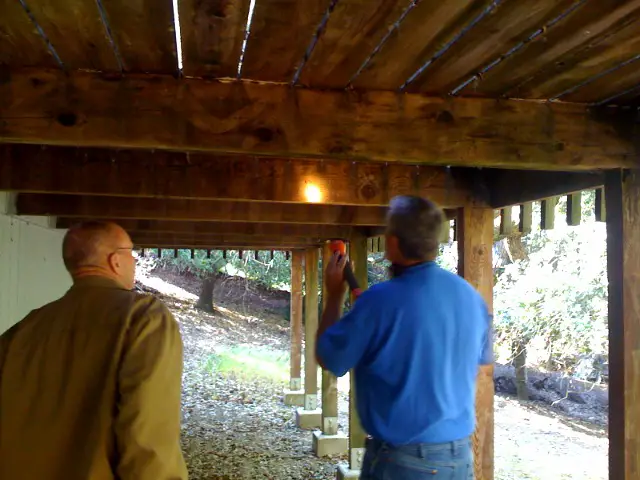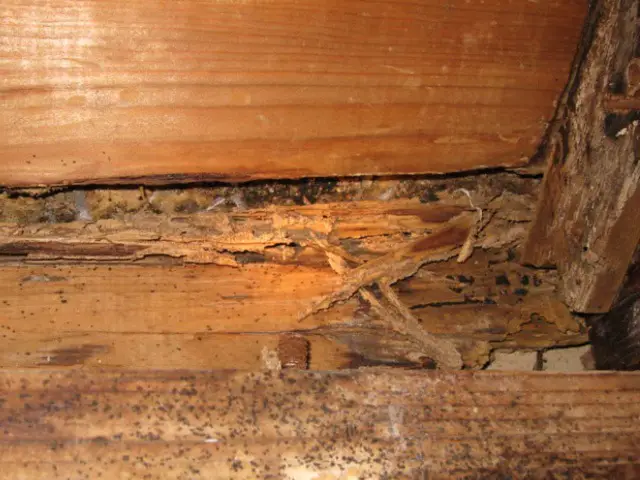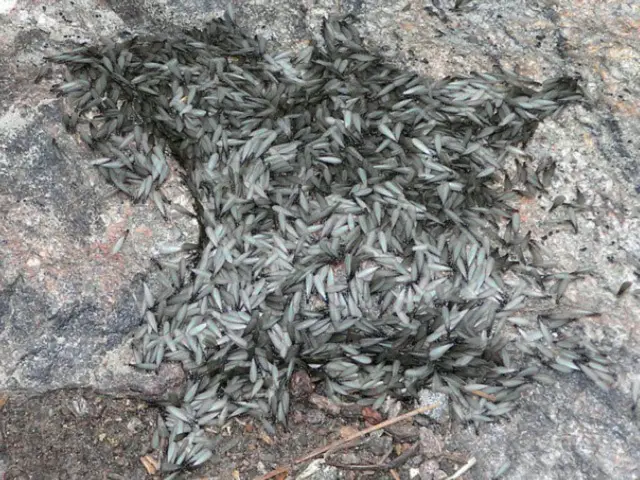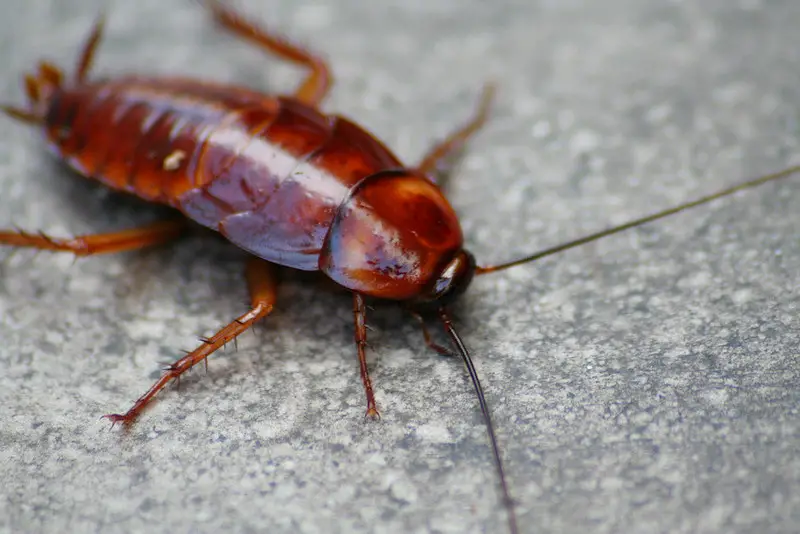Pigeons can be found nesting on the rooftops of homes, commercial buildings, and other areas close to humans. These pests can spread disease when they are allowed to nest, perch, and breed in these areas close to our homes. When a pigeon is nesting on a home, they are often in contact with the air conditioning units, air handlers and can even find ways to enter a roof’s attic. The presence of these annoying and dirty birds brings with them more than just filth and odor. The pigeons carry with them many parasites such as ticks, fleas, mites, and flies. They will also carry and spread diseases, which can seriously affect and even kill humans. In addition to the diseases they can spread, a pigeon’s feces contain uric acid. This destructive acid can eat through a building’s roof, take the paint off a car, and stain concrete.
While having the paint taken off of your car is bad, the potential danger of developing a life-threatening disease is a much more serious concern. Birds and their droppings are known to have more the forty viruses and over sixty diseases, which they can spread. In addition, pigeons will commonly carry a disease-causing fungus on their wings, feet, and their legs. This fungus is called Histoplasmosis and can be found in nitrogen-rich soils containing a large amount of pigeon feces. Small fungus spores are contained in the feces deposited soil until disturbed, and then the fungus becomes airborne where humans can inhale it.
Every year there are more the half a million reported positive tests for this disease in America. As a result, over fifty million Americans have been affected by Histoplasmosis, with nearly eight hundred annual deaths as a result. Anyone who comes in contact with the fungus can be at risk. This includes children playing in their own yard, landscapers, service workers, and construction workers who do repairs or build the fungus spores.
Histoplasmosis is a lung disease, which can vary from a mild infection to a life-threatening disease. When the fungus spores are spread and then breathed into the lungs causing Histoplasmosis, this disease is airborne in nature and cannot be spread from one person to another. Symptoms of Histoplasmosis can appear from five to eighteen days after being exposed to the spores. The disease can be diagnosed with a lab culture, blood work, and chest X-rays.
The symptoms range from person to person, with the most common ailments of this lung infection developing as fevers, chills, fatigue, chest pains, and a burning cough. While some people show no signs when they have Histoplasmosis, others can become severely infected to the point of hospitalization and even death. With an already weakened immune system: infants, the elderly, people with HIV, those who are undergoing chemotherapy, or others who have had an organ transplant may develop the most serious cases of this disease.
If you believe you are at risk for contracting Histoplasmosis, contact your doctor or healthcare professional for further information. If you presently have pigeons nesting on or around your home, be sure to call a professional bird and wildlife management professional the right way to begin making a plan to remove the birds from your home immediately.
Are pigeons considered a pest?
There is a fast-growing pigeon problem throughout the world. But you may be asking, what is wrong with a few pigeons flying around? Pigeons are dangerous pests. They can be seen perching on billboards, hanging around large shopping centers, standing on business signage, and around many neighborhoods. They are not very big, they are not out attacking or injuring neighborhood animals, and they don’t want much to do with humans. So why would there be any concern over Pigeons?
Pigeons are actually very special and interesting birds. They can have the ability to fly at over fifty miles per hour, and some can travel nearly 600 miles in a single day. Pigeons have very strong homing instincts and can find their way back from long distances. Pigeons have even been used as message carriers within our history. During the early Olympic games in Greece, pigeons were used to carry the news of who won the events. Many ornithologists would share their appreciation for a pigeon’s intellect, colorful beauty, and interesting behaviors.
Pigeons are, on average, about thirteen inches long from their beak to their tail. A pigeon commonly weighs close to one pound. There are at least twenty-eight different color patterns found on a pigeon. If you look closely, pigeons have either orange or reddish-orange eyes. Pigeons usually have red-colored feet and legs but can also have feathers covering their feet and legs. These coverings are called stockings. Pigeons have extremely good eyesight and can see colors and also ultra-violet light spectrums beyond that of humans. Pigeons have very healthy appetites and will eat nearly anything they can get their beaks on. They will drink by using their beaks like a straw by taking in water and then tilting their head back to ingest that water.
Pigeons have a language and use alarm calls as well. Often people have heard the coo-ing sound, which is most common. Pigeons will lay two eggs at a time and share the responsibility of keeping the eggs warm for the eighteen days it takes to hatch. In most cities, there are no natural enemies of pigeons. The only worry they would have is humans. In more open places, large birds of prey like hawks will hunt and eat the birds. A pigeon’s life can be nearly five or more years in the wild, and some have lived beyond fifteen years in captivity. It is believed that pigeons were first seen in America in the early 1600s.
Now that pigeons have made a place here, homeowners now have to worry about filthy deposits of feces, roof damage, dead birds, and possible disease. Pigeons can spread harmful diseases and parasites. The most common disease spread by pigeons is called Histoplasmosis, a fungus, which can be fatal if not very serious. Pigeons will also cause damage to a home or building’s roof, to a car’s paint, and will litter feces in any area they are nesting. Their feces contain enough acid to deteriorate the paint from a car. Those same acidic feces will get under the tiles of a roof and can ruin a roof’s underlayment, which can cause a roof to leak.
While the pigeons may be interesting to bird watchers, homeowners should promptly remove these pests from their homes and commercial buildings by calling a professional bird and wildlife management professional.
Failed Methods of Pigeon Removal
Domestic pigeons, also referred to as city pigeons or rock doves, first appeared in the United States during the early settlement era of the 17th century ever since pigeons have managed to infiltrate the entire North American continent and can be found everywhere.
The pigeon population in America is a growing problem. These winged rats create their ideal nesting and roosting grounds on and around various man-made structures such as balconies, utility lines, commercial buildings, residential homes, windowsills, bridges and rooftops.
A pigeon control problem is more than a nuisance — it’s a public health concern. Nests accumulate droppings rather rapidly, the contents of which are infested with various bacterial, fungal and viral diseases. The fact that the birds themselves are carriers of several parasites underlines the importance of pigeon removal.
Pigeon droppings on your home structure can also create substantial property damage. Cleaning up the droppings can aggravate contamination if not done properly.
Whether you decide to hire a pigeon removal specialist or are determined to tackle the problem on your own, pay heed to the following failed methods for eliminating a pigeon problem in the U.S.
Pigeon Control – The Futility of Food Source Removal
Removing any food sources that may attract pigeons is a good preventative measure. However, effective pigeon removal requires a lot more work. Pigeons can always find sources of food, whether at a nearby park or from the neighbor’s trash.
Failed Methods of Pigeon Removal — Trapping and Releasing Birds
Trapping and releasing the birds, even at a faraway location, is usually futile for pigeon control. Pigeons are intelligent pests, and when it comes to a well-established nesting or roosting area, they almost always find a way home.
Failed Methods of Pigeon Removal — Noise or Harassment
Using ultrasonic noise devices might work on smaller groups of pigeons or if the nesting grounds have not already been established. However, it won’t do much in the long term for your pigeon control problem. Additionally, throwing rocks or removing nests might irritate the birds, but for established nesting and roosting grounds, these are only mild deterrents rather than skillful pigeon removal tactics.
Pigeon Control — The Useless Plastic Owl Tactic
Mounting a plastic owl next to a roosting or nesting site is an ineffective strategy in pigeon control. In most cases, the pigeons will simply use it as a place to perch.
Bear in mind; once pigeons have managed to build nests and establish roosting grounds around your home or neighborhood, pigeon removal can be nearly impossible without the help of an expert. Proper pigeon removal requires the services of a professional with experience in pigeon control.
Phoenix Pigeon Problem Grows
Phoenix, Arizona, has a radius of a little more than five hundred squares miles, which makes Phoenix larger in land size than Los Angeles. With a sprawling landmass, Phoenix’s population is now over one and a half million people and growing. This large city is the fifth largest in the country and is the largest populated capital city in the country. For some, the attraction to Phoenix is the dry, warm climate, which offers its residents more than three hundred sunny sky days each year.
Some of the largest companies in the world have also made Phoenix, AZ, their home to do business, such as Boeing, Intel, Motorola, Honeywell, Phelps Dodge, and American Express. With a steadily growing human population and a constant increase in infrastructure and building development, another fast-growing population is making a mark in Phoenix, Arizona. That rapidly growing population is Pigeons. Pigeons have become very active in the Phoenix area and are causing great damage to the homes and buildings they are taking over.
Pigeons are finding the greater Phoenix area to be a perfect place to breed, which is causing their population to grow at an alarming rate. With a growing pigeon population in Phoenix, it is a guarantee that damage will also increase due to an increase in Pigeon activity. The pigeons are drawn to the warm, dry climate much in the same way that humans are. With a total absence of cold, snow, ice, or constant rain, it is easy for Phoenix’s pigeon populations to move around, build new nests, and breed new life. Phoenix has a wide variety of buildings and infrastructure in the form of residential houses, apartment complexes, condo buildings, office parks, commercial structures, large shopping plazas, strip malls, office buildings, gas stations, freeway systems, overpasses, cell phone towers, all which are offering pigeons a safe place to breed, roost, make nests, and continue to boost their numbers.
As the Phoenix, Arizona area experiences a growing pigeon population, homeowners and commercial property managers must also face these birds’ annoying and costly presence. For some, these birds have become like pets to feed and offer seed to in the yard or park. However, most who have begun experiencing a pigeon infestation are not seeing these birds as friendly pets. Those Phoenix residents who are not enjoying the pigeon’s presence realize the true damage and cost that can be associated with these birds. Phoenix’s pigeons are causing damage to the homes and buildings they are taking over. As the pigeons make a commercial building or home their new nesting place, it is highly likely to experience problems with noise, pigeon droppings, filth, waste, and a very messy environment. The pigeon feces contain acid, which can eat through a car’s paint, a home or a building’s roof, and the build-up can also be dangerous to the health of those in contact with the pigeon waste.
Don’t let pigeons get out of control, contact a professional pigeon control and wildlife expert today if your home or building is experiencing a Pigeon problem.
Scottsdale Pigeon Control
Pigeons seem harmless enough, and to some Scottsdale residents, they are even being fed as pets. Scottsdale’s pigeons are, however, far from friendly pets. The pigeons in the Scottsdale area are becoming very serious pests. Scottsdale homeowners and property managers are facing serious damage and filthy messes of feces and waste left behind these disgusting birds. While feeding the pigeons is not the only thing keeping the bird’s population on the rise, it is one sure way to attract the unwanted pigeons to your Scottsdale property. Once the pigeons have found a food source and have begun nesting or perching on a Scottsdale home, they are likely to remain there for a very long time. When the pigeons are nesting or roosting, they will leave behind a horrible mess.
Scottsdale homeowners and property managers have more to worry about than just a mess left behind by area pigeons. The health and well-being of all who come in contact with an accumulation of pigeon feces are at risk. Pigeons can spread diseases, bacteria and invite other pests in the places they inhabit. Scottsdale is home to a growing pigeon population, and with that rise in pigeons, numbers will come increased damages to roofs, further pigeon waste to clean, and the potential of serious health risks. The pigeons in Scottsdale will be attracted to the many homes with open roofs; they will find many sources of food in the Scottsdale area and will also be found using the swimming pools for a water source.
Pigeons are found throughout Scottsdale’s many neighborhoods to the south and the north. Where ever the Scottsdale pigeons can find food and a place to nest, they will likely make their presence known. Many Scottsdale homeowners are having great difficulty removing the annoying birds. Even when the pigeons appear to have left a Scottsdale home or building, they often return back within a few weeks or sometimes months. The Pigeons find the roofs of Scottsdale homes inviting and are very safe for their nests. Pigeons in Scottsdale will continue to be a problem for some time to come. The only way to effectively remove these winged rats is to completely exclude them from your roof or home’s ledges.
For the many Scottsdale area commercial property managers, the pigeon problem has become out of control. Pigeons can be found ruining awnings, littering driveways, and the birds’ feces are an unwanted nuisance on and around many buildings. The Scottsdale pigeon problems are affecting gas stations, movie theaters, shopping malls, parking garages, strip malls, and many office and medical complexes. Wherever the pigeons are found, there will be a build-up of feces, bird waste, and the possibility of damage. When a serious pigeon problem is present in a Scottsdale commercial building, it is wise to call a local pigeon control expert or a wildlife management professional to assess the pigeon problem. Once the Scottsdale pigeon problem is assessed, a plan can be put in place to prevent the property from any further mess or damage from Scottsdale pigeons.
Tempe Pigeon Control
Tempe is experiencing a rise in pigeon populations, and the effects are leaving many Tempe area homeowners frustrated with large messes to clean and costly roof damages to repair. Tempe pigeons are getting more clever in finding ways to remain in the neighborhoods they have begun nesting in. Tempe pigeon problems have extended into the palm trees around many homes. Once the pigeons have made a nest in a palm tree, it is nearly impossible to get the annoying and disgusting birds out of the tree. This may not be the news that Tempe homeowners want to hear. However, they do have options to help with a pigeon infestation. Pigeons are nothing new in Tempe. However, their presence is now being seen in larger numbers, which means pigeon damage is also on the rise.
For many Tempe homeowners, the frustration can lead to picking up a gun to begin a killing spree. While most will not miss the annoying Tempe birds, it is possible that the police may have something to say about this unlawful activity. Besides getting a ticket for discharging a firearm in the Tempe city limits, a homeowner may likely cause further damage to roof tiles, holes in the home’s stucco, broken windows, or possibly hurt themselves or someone accidentally while attempting to shoot a pigeon. While the feeling of killing an annoying Tempe pigeon could be rather satisfying, the task of removing a disease-infected pigeon carcass will ruin the short-lived joy. Besides being dirty, pigeons are hosts for fleas, ticks, mites, and as a result, can spread diseases.
The pigeons are found perching on light poles, utility lines, walls on many commercial buildings, billboards, and signs in the Tempe area. Pigeons have made their presence known, and there will not likely be a way to rid Tempe of these winged rats. However, there are ways to permanently remove the birds or exclude the pigeons from the area they are affecting. When discussing removal, it is important to clarify if the birds are being taken and then released somewhere or if the Tempe pigeons are to be eliminated. Whenever the pigeons are released back into the wild, no matter how far out into the desert or even the mountains, they will most likely return. While we like to think of the gross birds as just that and often stupid, they are, in fact, not dumb in the least.
Pigeons have a very strong ability to track and return to the places they have built nests. While these messy birds are affecting Tempe homeowners, the decision to prevent further damage and mess must include options of either destroying a current population or excluding the pigeons from your home’s roof. When a Tempe homeowner excludes the birds from their roof, the pigeons will be forced to move to a neighbor’s home. The Tempe pigeon problem is solved only by an entire neighborhood making proactive decisions to exclude pigeons from the entire area.




